What to know about printmaking: major elements and techniques
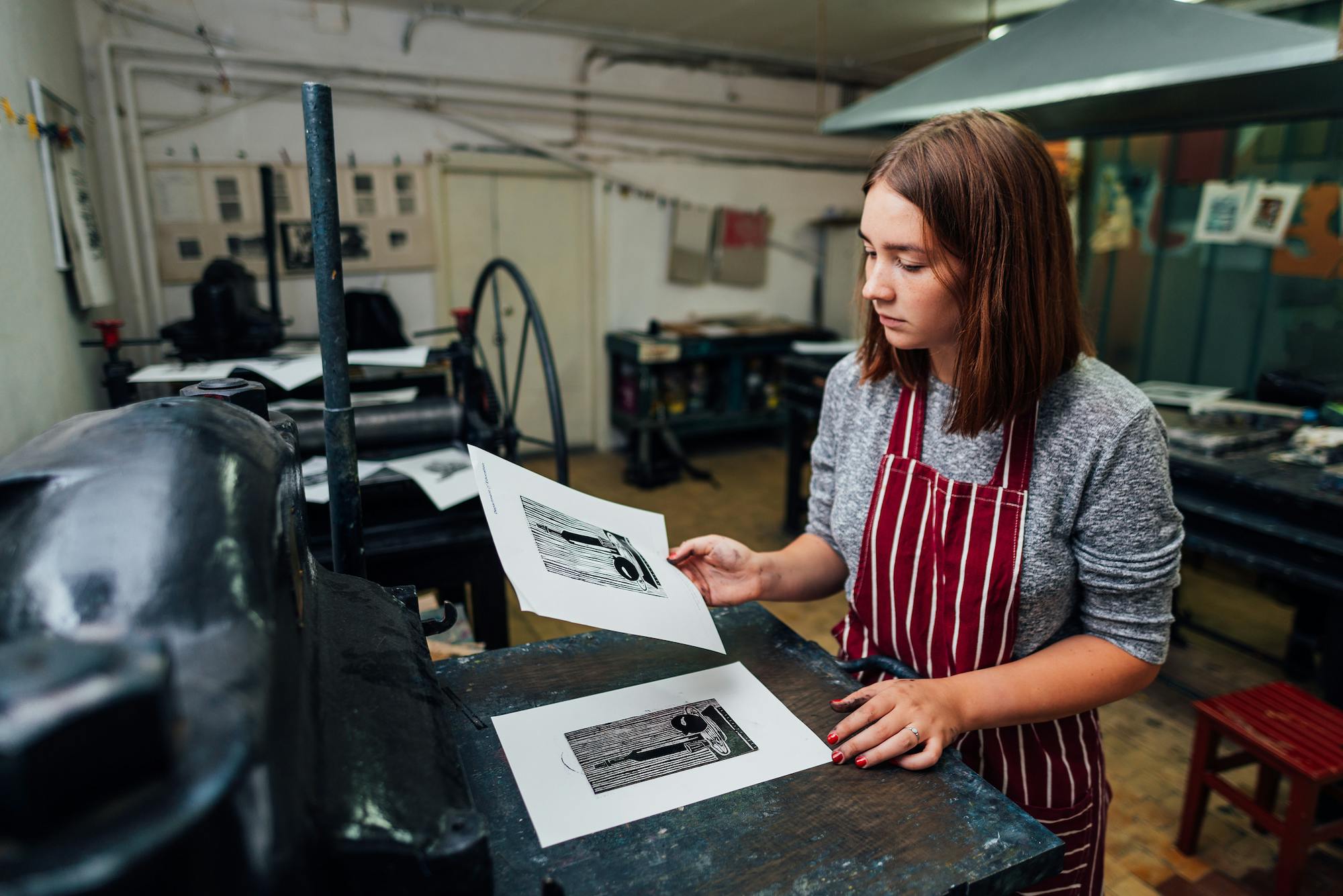
The tradition of printmaking has been around since at least the first century AD, and was first used on paper in the seventh century. Its popularity grew in the fifteenth century when paper became widely available, and as time went by, printing techniques were more complex, and prints turned into one of the main tools to spread beliefs, ideas, scientific breakthroughs, and instruction manuals across borders. Nowadays, the art of printmaking remains alive and is currently being redefined and challenged by contemporary artists. Likewise, the market for prints is thriving and is a favored class of asset amongst collectors around the world. This article looks at the main elements of fine art prints and explores the five most common printing techniques.
What are original art prints in the first place?
Even if all kinds of images are frequently tagged as “prints,” an original fine art print is an artwork made into multiple iterations created through a transfer process that involves ink, a printing surface, and a matrix or tool used to place the image on the desired surface, mainly some type of paper. Among other elements, what sets each printing technique apart is the printing press used and the different methods, mainly the intaglio (the image is incised into the surface) or the relief process (the designs are raised on the surface) applied to the matrix. Some of the most commonly used matrixes to transfer the image are woodblocks, metal plates, lithographic stones, or mesh screens.
Now it’s important to differentiate between fine art prints conceived as original artworks printed in limited-editions and high-quality digital reproductions of 2-D artworks which are frequently tagged as “prints” or “giclée prints.” Even if nowadays many “giclée prints,” produced on a large scale are also signed by the artist and printed in limited editions, their market value is far below the one of original fine art prints, and they are usually considered to be decorative objects. This sort of reproduction is usually printed on-demand, comes in a variation of sizes, and can be ordered with one click from an e-commerce website.
While all of this is true, one should keep in mind that nowadays there are also many artists that use computers and world-class software to create original artworks, so only in that case, is a digital art print to be thought of as an original artwork. For example, Petra Cortright and Matthew Stone are two artists who commonly construct their artworks using software and then print them on aluminum or canvas to create a unique series of printed works.
The 5 most common printing techniques
Below we explain some of the most popular printing techniques.
Woodcut printing
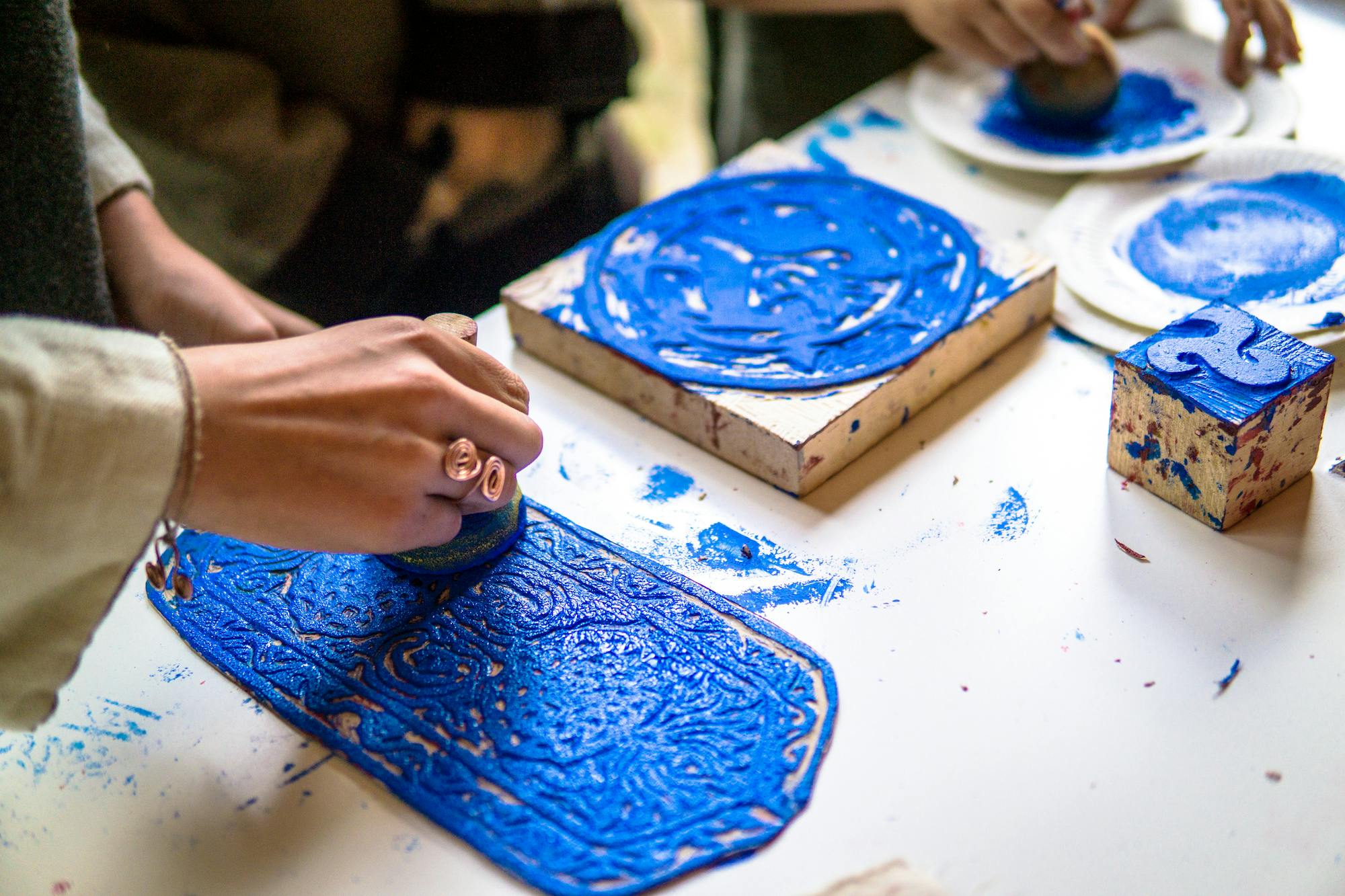
Woodcut printing is one of the oldest, yet simplest, forms of printmaking. Various implements (both hand tools and power tools) can be used to cut an image into a block of wood. Paper is then placed over the inked block and rubbed by hand or passed through a press to transfer the ink from the block to the paper to create the image. This means woodcut printing is a relief process, meaning a process in which a surface is carved so that the image that is inked and then printed stands out in relief.
As explained in an essay by Wendy Thompson from The Met, woodblock printing was first introduced during China's Han Dynasty ( 206 BCE to 220 CE) and was mainly used in textiles. This technique spread to Europe in the fourteenth century where it became a popular technique for the mass distribution of religious and instructive images. A good number of early woodcuts illustrated the newly printed books resulting from the invention of the printing press, and, as years went by, the medium became more sophisticated. During that time, German artist Albrecht Dürer brought this medium to unseen levels of detail and perfection.
Later on, during the seventeenth and eighteenth centuries, woodblock printing saw yet another golden age of artistic achievement in Japan in a period known as ukiyo-e. Japanese woodblock prints attracted many nineteenth century European artists, like Van Gogh, Degas, and Toulouse-Lautrec, who collected and sought inspiration from these prints. As time went by, different artists continued to experiment with the medium which has been used by contemporary artists such as Sol Lewitt, Robert Mangold, Damien Hirst, Alex Katz, and Kour Pour.
Engraving
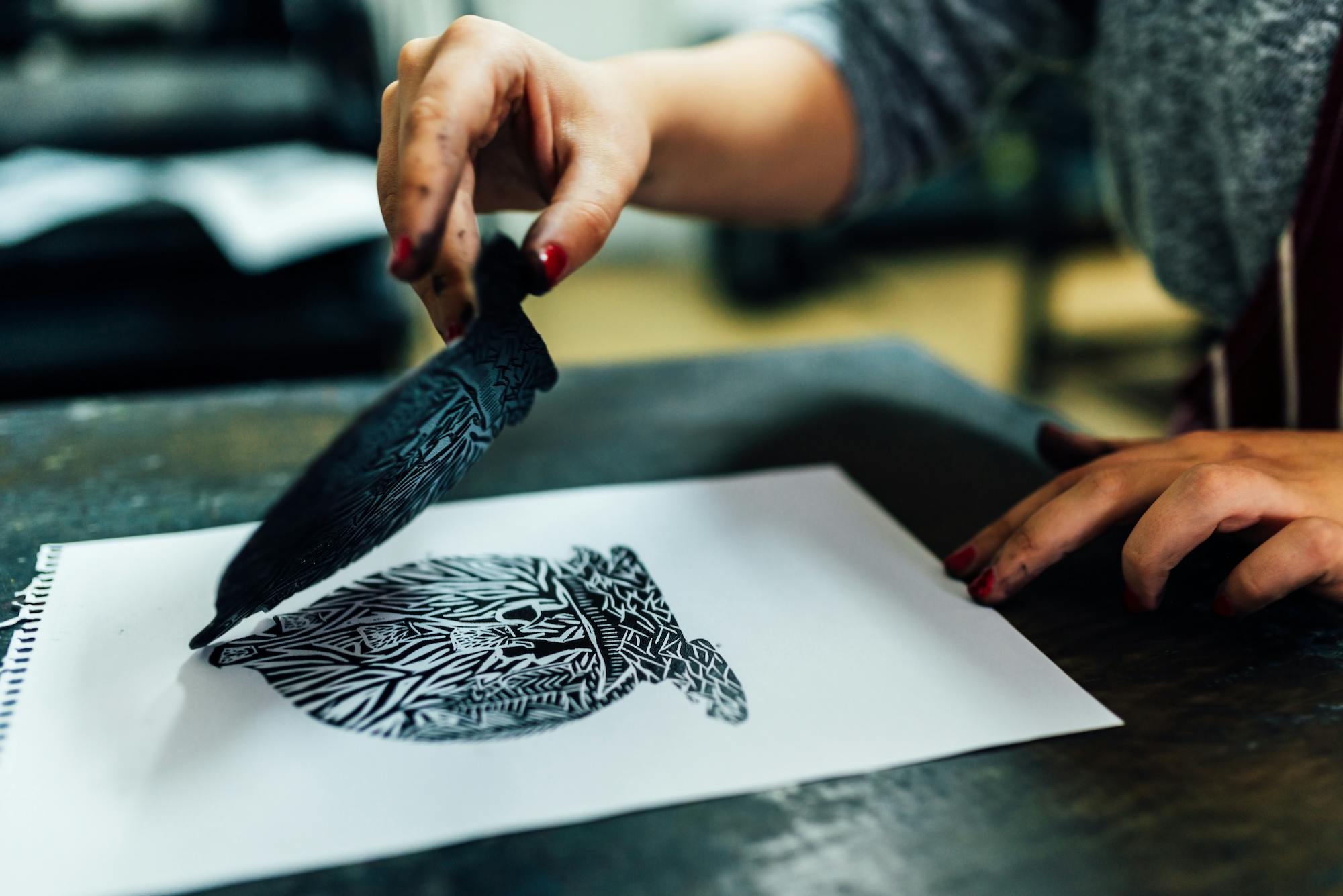
While engraving has been around since classical antiquity, it wasn’t until 1430 when engraved plates were used in the printmaking process. As described in Tate´s Art Terms, engraving involves making incisions with a burin (an engraving tool such as a very fine chisel with a lozenge-shaped tip) into a metal plate that holds the ink used to form the printed image. This means engraving is one of the many intaglio techniques, which is a term used to refer to all printing techniques in which an image is incised into a surface, and the incised line or sunken area holds the ink.
While engraving was used by many Old Masters such as Albrecht Dürer, noted for his landscape engravings, Lucas van Leiden, Hendrik Goltzius, and Rembrandt were also master engravers. As time went by, engraving continued to be used and was practiced by many contemporary artists such as Josef Albers, Jackson Pollock, and Louise Bourgeois.
Aquatint
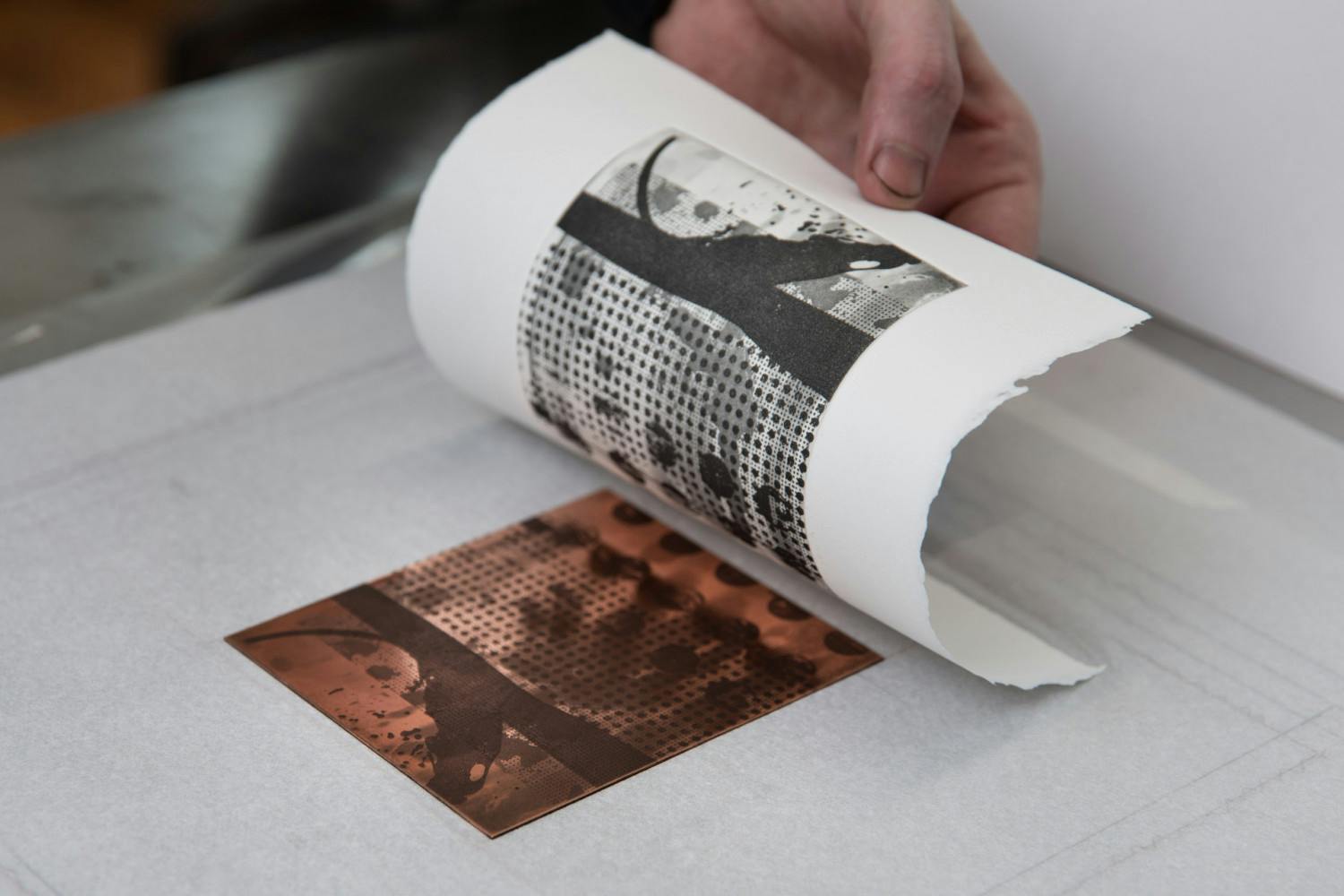
Aquatint is another intaglio printmaking technique that develops tonal areas with different gradations by using acid to eat into the printing plate to create sunken areas which hold the ink. It was first developed in France in the 1760s, and became popular in Britain in the late eighteenth and early nineteenth centuries. Similar to the other printing techniques, aquatint is frequently used in combination with other intaglio processes. As explained in MOMA´s Art Terms, when creating an aquatint, powdered resin is first sprinkled on a metal plate that then adheres through a heating process. When the plate is submerged in acid, tiny areas unprotected by the resin are “bitten” by the acid, creating recesses. After the resin coating is removed, the plate is inked to fill in those recesses. Finally, when a piece of damp paper is laid on the plate and run through a press, the tiny ink-filled recesses print as subtle tonal fields.
During the late eighteenth and early nineteenth centuries, aquatints produced many beautiful copies of watercolor washes or highly-prized drawings which were popular at the time and were often used in color-plate books. As time went by, aquatint continued to be a popular printing technique used by modern artists, such as Pablo Picasso, and contemporary artists, such as William Kentridge, Kim Lim, and Chuck Close.
Lithography
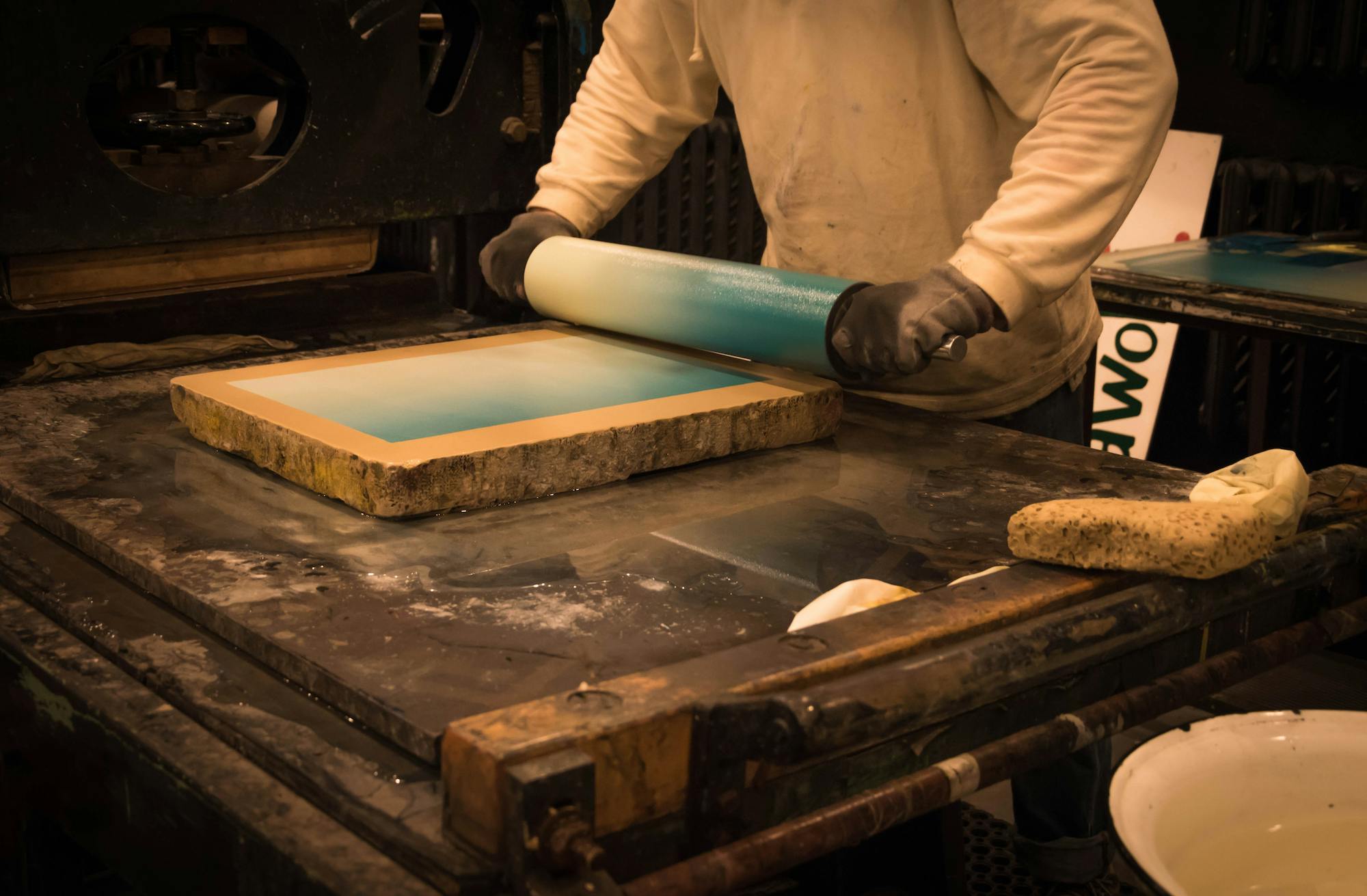
Lithography (from the Latin for stone, litho, and mark, graph) was created in 1798 in Munich and, as detailed by Ives Colta in an essay, allowed for printing an almost unlimited amount of reproductions of the same image. In broad terms, the process of creating a lithography is based on the fact that grease and water don't mix. According to Tate´s Art Terms, to obtain a lithograph the desired image is applied to a grained surface (traditionally stone but now usually aluminum) using a greasy medium (like a special greasy ink called tusche, crayon, pencils, lacquer, or synthetic materials). Normally, a solution of gum arabic and nitric acid is applied over the surface, which produces water receptive areas (non-printing areas) and grease-receptive areas (printing areas). The printing surface is kept wet so that a roller charged with oil-based ink can be rolled over the surface only sticking to the grease-receptive image areas. Finally, paper is placed against the surface and the plate goes through a press.
While during the first decades of the nineteenth century some artists like Eugène Delacroix experimented with lithography, at the end of the nineteenth century, technological advances that allowed lithographs to be printed in very large sizes and multiple colors, took this medium to unseen levels. Artists like Henri de Toulouse-Lautrec produced colorful images that later influenced many important 20th century artists such as Henri Matisse and Pablo Picasso.
Screen printing
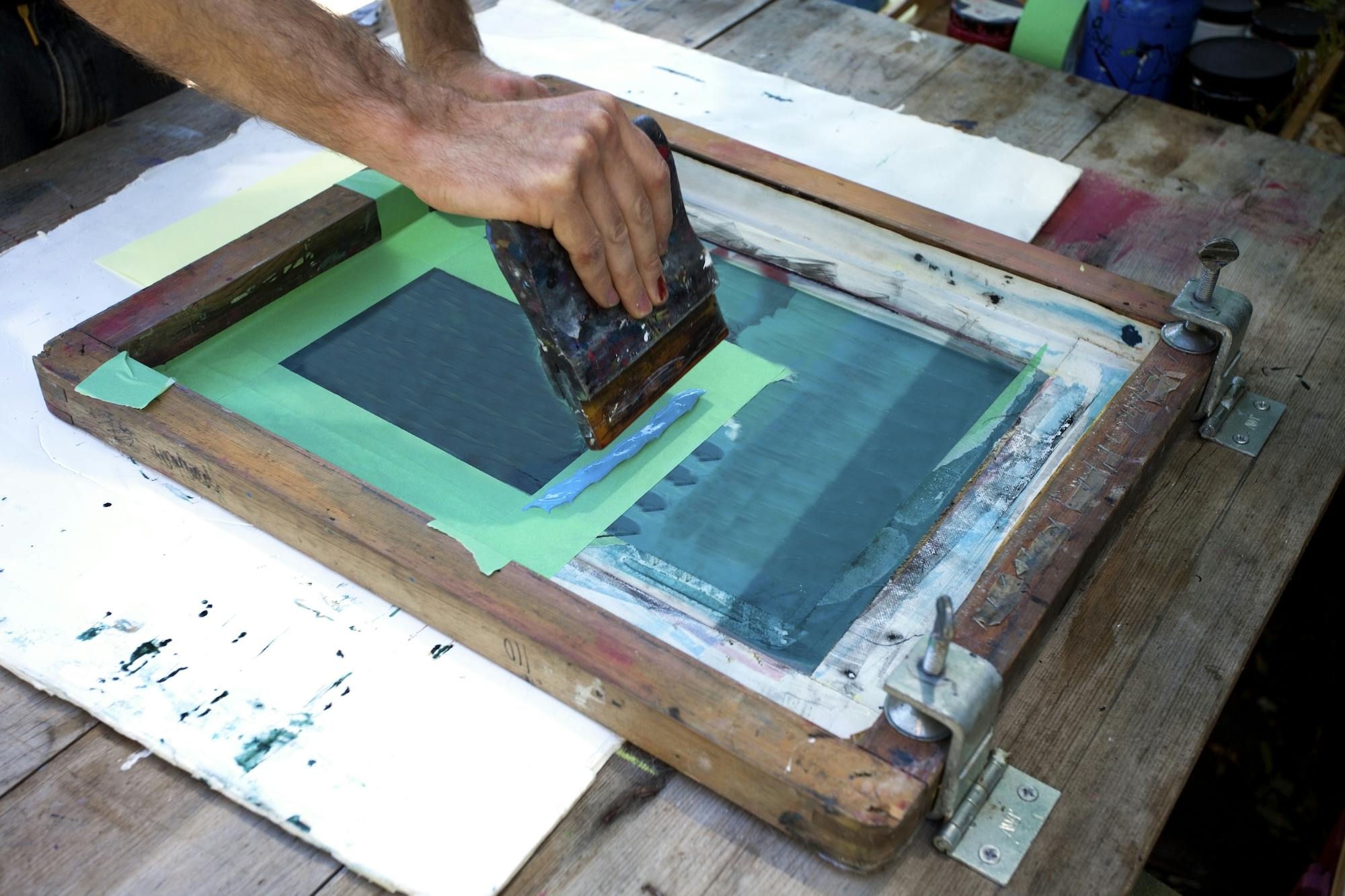
Also known as silkscreen, screen prints are a result of a “stencil method” technique that does not require a printing press. The latter makes screen printing relatively easy and cost effective compared to other techniques. Likewise, with this method, an image can be printed over a diverse set of flat surfaces ranging from paper to posters and fabrics, which is something that is not possible with other printing techniques.
While there are different methods associated with screen printing, such as the photographic transfer method, in which the artist works similarly to a photographer, in general terms, to produce a screen print the artist applies a stencil, that blocks all openings except the image area, to a piece of fabric stretched over a wooden frame. As explained by The Minneapolis Institute of Art, in a video, a sheet of paper is then placed under the screen and a bit of ink is applied along the top. Finally, the artist pulls the ink across the screen with a squeegee forcing it through open areas and onto the paper below. This process is then repeated until all colors of the original image are accounted for.
While the origin of silk-screening can be traced back to the Song Dynasty in Ancient China, it was later redefined in Japan and arrived in Europe around 1907. As described in a Widewalls article, from that moment on, the technique was predominantly used in textiles, wallpapers, and the advertisement industry. During the 1930s the term “serigraphy” was introduced to differentiate the artistic application of silkscreen printing from the industrial use. Importantly, during the 1960s, iconic artists such as Andy Warhol experimented with the technique to create emblematic artworks resulting from this process. To date, the serigraphs created by Pop Artists remain one of the most recognizable artworks ever created with that technique.